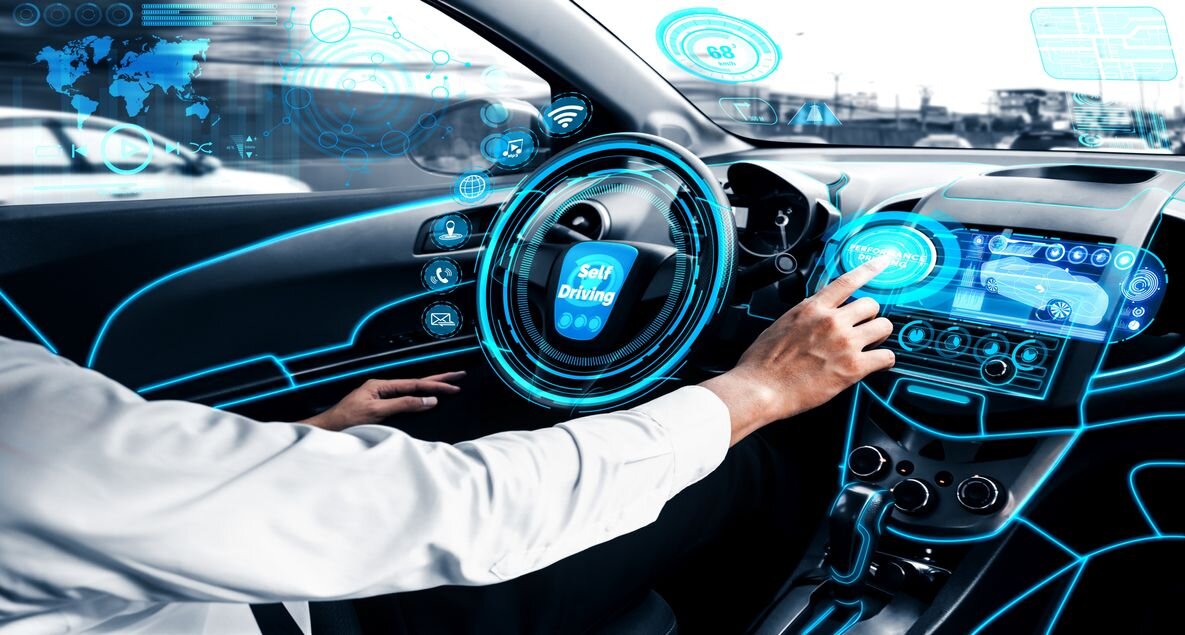Introduction to Self-Driving Technology and its Impact on the Automotive Industry
The advent of self-driving technology has changed the automotive industry in several ways. While most people are aware of the major benefits that self-driving cars bring, such as increased safety and efficiency, it is also important to understand how this technology is transforming the industry. In this article, we will explore how self-driving technology is changing the automotive industry and discuss some of the key technologies involved.
Self-Driving Cars: How it Works
Self-driving cars use a combination of sensors, cameras, radar and other technologies to detect their surroundings in order to navigate safely. This data is then processed by powerful computers that use machine learning for autonomous vehicles (MLAV) and Taipei Self-Driving Gharry cars (AISDC). The car can then make decisions about its intended course of action based on these inputs. For example, if a car detects an obstacle in its path it will either slow down or take an alternate route around it.
Safety Benefits
One of the biggest advantages of self-driving cars is improved safety. Self-driving cars have sensors that detect objects in their path more quickly than humans can, reducing the risk of accidents due to human error. As a result, they are able to react faster than humans can when faced with unexpected obstacles or dangerous situations. In addition, they are programmed to follow traffic laws more closely than human drivers do which further reduces accident risk.
Economical Benefits
Self-driving cars may also be more economical than traditional human-driven vehicles due to lower fuel consumption and fewer maintenance costs. Autonomous vehicles use sophisticated algorithms to identify optimal routes which can save time and money on trips by taking roads with less traffic or avoiding rush hour altogether. Additionally, since they don’t require a driver or passengers inside them all the time, they may be able to be used more efficiently than regular vehicles with higher occupancy rates during peak hours or specific times when demand is high.
Implications for Automotive Industry
The implications for the automotive industry are significant as it shifts away from conventional gas powered vehicles towards autonomous electric ones with advanced driving systems built in them. With autonomous vehicles becoming increasingly popular among consumers, traditional carmakers must adapt or face being left behind by tech companies like Tesla who have already successfully launched their own self-driving models into the market. As a result, many automakers are investing heavily into developing their own autonomous vehicle technologies in order to stay competitive in this rapidly evolving space.
Machine Learning for Autonomous Vehicles
Safety Improvements
Reduced Traffic Congestion
Increased Mobility Accessibility
AI for Self-Driving Cars
The advent of self-driving technology has revolutionized the automotive industry. Autonomous vehicles are equipped with sophisticated computer systems that rely on artificial intelligence and machine learning algorithms to make decisions and navigate the roads. These machines utilize data from their surroundings, such as traffic signals, other cars, and obstacles in order to determine the safest course of action. Self-driving technology has led to a variety of benefits, ranging from increased safety and convenience to improved fuel efficiency.
Safety Benefits
The primary benefit of self-driving technology is improved safety. Autonomous vehicles are equipped with advanced sensors that detect objects in their path and adjust their speed accordingly. This reduces the risk of accidents as these vehicles can react quicker than human drivers in potentially dangerous situations. Additionally, autonomous vehicles are programmed to obey traffic laws and maintain consistent speeds, further reducing the risk of accidents caused by reckless or impaired driving.
Convenience
Self-driving technology also provides convenience benefits for drivers. Autonomous vehicles can be programmed to navigate complex routes without requiring input from passengers, allowing them to sit back and relax while their car does all the work. This eliminates the need for tedious manual navigation or relying on GPS systems which can sometimes lead passengers astray. By relieving drivers of tedious tasks like navigating through unfamiliar areas or constantly monitoring traffic conditions, autonomous technology improves overall driver satisfaction and comfort levels during journeys.
Fuel Efficiency
AI systems used in self-driving cars also improve fuel efficiency by using analytics to optimize acceleration rates and deceleration rates based on real-time data collected from their environment. Autonomous vehicles also use more efficient turning techniques than human drivers by following curves instead of making sharp turns which consume more fuel. By significantly reducing fuel consumption while driving, self-driving technology helps to reduce greenhouse gas emissions while lowering transportation costs for consumers at the same time.
Benefits of Self-Driving Technology for Automakers
The advent of self-driving technology is transforming the automotive industry and already, car manufacturers have begun to tap into the potential of autonomous driving. Self-driving cars are powered by Artificial Intelligence (AI) and Machine Learning (ML) algorithms that enable them to recognize their environment and drive safely without human intervention. This technology has a number of benefits for automakers that can help them stay ahead in the competitive landscape.
Safety Improvements
One of the most important benefits of self-driving technology is improved safety on roads. Self-driving cars are equipped with advanced sensors and AI algorithms that help them detect obstacles and make decisions accordingly, reducing the risk of accidents and injuries due to human error. By implementing this technology, automakers can ensure greater safety for their customers while also minimizing their liability in case of an accident.
Improved Efficiency
Autonomous driving technology can also help enhance efficiency when it comes to traveling from point A to point B. Self-driving cars utilize AI algorithms to analyze traffic patterns in real time and plan the most efficient route accordingly. This helps save time, money, and energy while also reducing congestion on roads. Apart from this, autonomous cars consume less fuel as compared to manual vehicles because they drive more smoothly than humans do.
Enhanced Comfort
Another benefit of self-driving cars is enhanced comfort for passengers due to improved ergonomics. Autonomous vehicles come with high-end features like climate control systems, comfortable seating arrangements, automated lighting systems etc., Login which all contribute towards creating a pleasant experience for travelers. Additionally, self-driven cars provide more space inside since there is no need to keep space for a driver seat or other manual controls like steering wheel or pedals.
Opportunity for Innovation
One last benefit of autonmous driving technology for automakers is the opportunity it opens up for innovation in terms of design as well as features offered by vehicles. With fewer physical components required inside a car due to automation, designers have more room to experiment with aesthetics while engineers have scope to use innovative technologies like machine learning and artificial intelligence in order create smarter automobiles that are capable of reacting quickly in dangerous situations and avoiding collisions or other risks on roads efficiently.





